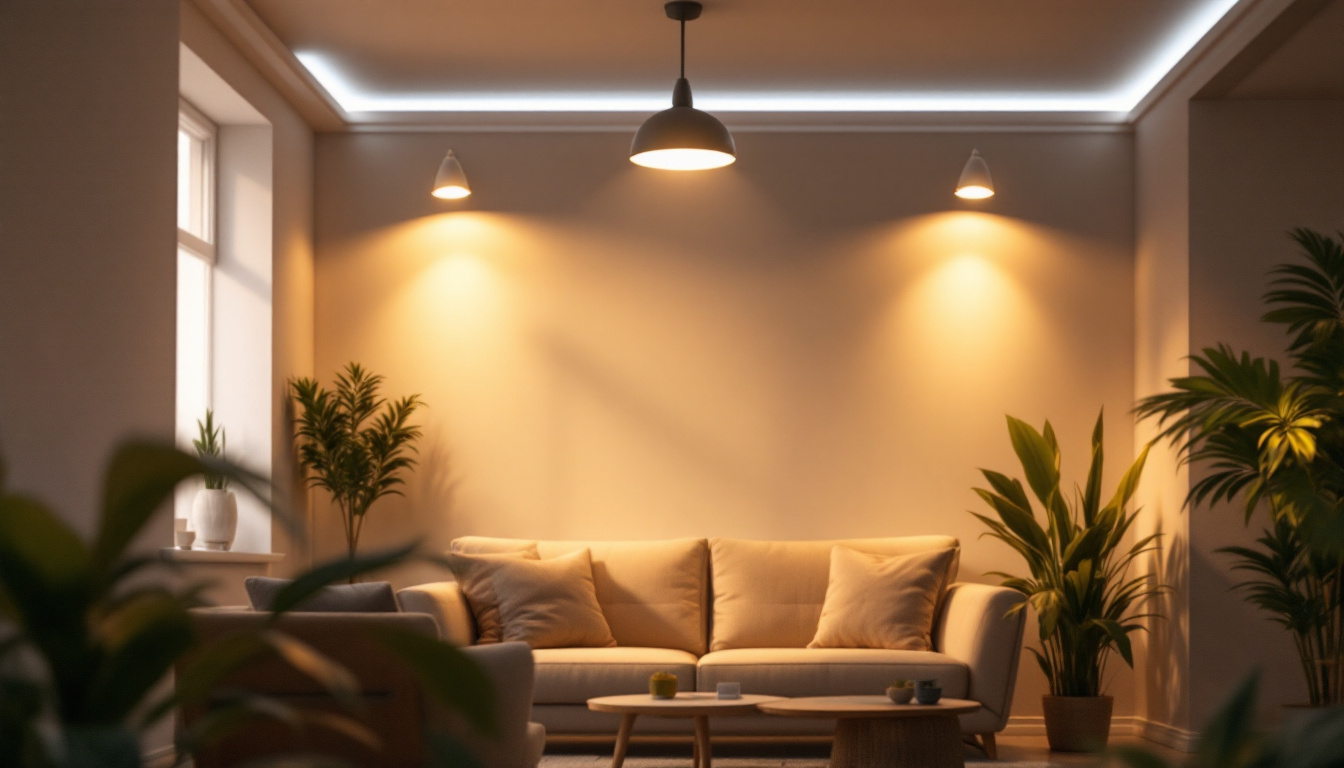
In the realm of outdoor lighting, understanding the nuances of various lighting options is essential for lighting contractors. This guide aims to provide a comprehensive overview of outdoor lighting, focusing on the types, applications, and considerations that professionals should keep in mind when designing and implementing outdoor lighting solutions.
Outdoor lighting serves multiple purposes, from enhancing aesthetics to ensuring safety and security. It is crucial for lighting contractors to grasp the fundamental principles of outdoor lighting to meet client expectations effectively.
Outdoor lighting is not merely about illumination; it plays a vital role in creating ambiance and enhancing the overall experience of outdoor spaces. Well-placed lighting can transform a dull backyard into a vibrant gathering spot, while also providing the necessary safety features for pathways and entrances.
Moreover, outdoor lighting can extend the usability of exterior spaces. With the right lighting, patios, gardens, and walkways can be enjoyed well into the evening, making them functional areas for social gatherings or quiet relaxation. This not only maximizes the value of the property but also encourages homeowners to spend more time outdoors, fostering a connection with nature and the community.
In addition to enhancing the aesthetic appeal and functionality of outdoor areas, effective lighting can also contribute to energy efficiency. By utilizing LED fixtures or solar-powered lights, homeowners can reduce their energy consumption while still achieving a beautiful and inviting atmosphere. This eco-friendly approach not only lowers utility bills but also aligns with the growing trend of sustainable living, appealing to environmentally conscious clients.
When it comes to outdoor lighting, there are several types to consider, each serving different functions. Understanding these types will enable contractors to make informed decisions tailored to their clients’ needs.
In addition to these primary types, there are also specialized fixtures designed for unique applications. For instance, pathway lights not only guide guests safely along walkways but can also be integrated with smart technology, allowing homeowners to control them remotely or set them to turn on automatically at dusk. Furthermore, floodlights can be strategically placed to illuminate larger areas, such as driveways or sports courts, providing both security and functionality. Understanding the diverse range of outdoor lighting options empowers contractors to create customized solutions that cater to the specific needs and preferences of their clients.
Designing outdoor lighting involves more than just choosing fixtures; it requires a thoughtful approach that considers various factors. Lighting contractors must evaluate these elements to create effective and appealing lighting solutions.
One of the primary functions of outdoor lighting is to enhance safety and security. Well-lit pathways, entrances, and driveways reduce the risk of accidents and deter potential intruders. Contractors should prioritize areas that require illumination to ensure that clients feel safe in their outdoor environments.
Incorporating motion sensors and timers can further enhance security, allowing lights to activate when movement is detected or at predetermined times. These features not only improve safety but also contribute to energy efficiency. Additionally, the strategic placement of lights can create a sense of visibility, making it easier for homeowners to monitor their property and for guests to navigate their way safely. Brightening entry points and dark corners can significantly reduce the likelihood of accidents and enhance the overall sense of security for families and visitors alike.
With growing concerns about energy consumption, lighting contractors should consider energy-efficient options when designing outdoor lighting systems. LED fixtures have become increasingly popular due to their longevity and low energy usage compared to traditional incandescent bulbs.
In addition to selecting energy-efficient fixtures, contractors should also evaluate the placement and spacing of lights to minimize energy waste while maximizing illumination. Utilizing solar-powered lights can also be an effective way to reduce energy costs, especially in remote areas. Furthermore, incorporating smart lighting systems that can be controlled via mobile apps or home automation systems allows homeowners to adjust brightness levels and schedules based on their specific needs, further enhancing energy savings. This adaptability not only promotes sustainability but also aligns with the increasing demand for smart home technologies.
Outdoor lighting should seamlessly integrate with the landscape design. This requires an understanding of the surrounding environment and the architectural style of the property. Lighting contractors should work closely with landscape architects or designers to ensure that the lighting complements the overall aesthetic.
Consideration should also be given to the types of plants and features that will be illuminated. For example, uplighting can create dramatic shadows and highlights on trees, while downlighting can provide a soft glow over seating areas. The goal is to enhance the beauty of the landscape while providing functional illumination. Furthermore, the use of color temperature can greatly influence the ambiance; warm white lights can create a cozy and inviting atmosphere, while cooler tones can evoke a more modern and sleek feel. By thoughtfully selecting the right fixtures and techniques, contractors can transform outdoor spaces into enchanting environments that invite enjoyment and exploration long after the sun sets.
The selection of fixtures is crucial in outdoor lighting design. Contractors must consider various factors, including style, functionality, and durability. Each fixture type has its unique advantages and applications.
There are several types of outdoor lighting fixtures available, each designed for specific purposes. Understanding the characteristics of these fixtures will help contractors make informed choices for their projects.
outdoor fixtures must withstand various weather conditions, making durability a critical factor. Contractors should consider materials such as stainless steel, aluminum, and weather-resistant plastics, which offer longevity and resistance to corrosion.
Additionally, the finish of the fixtures should be considered to prevent fading and wear over time. A high-quality finish will ensure that the fixtures maintain their appearance and functionality throughout their lifespan.
The rise of smart technology has introduced new possibilities for outdoor lighting. Smart lighting solutions allow for greater control and customization, enabling contractors to offer clients advanced features such as remote access, scheduling, and integration with home automation systems.
Implementing smart lighting can enhance user experience by allowing homeowners to adjust lighting levels based on their preferences or activities. This level of control can also contribute to energy savings by ensuring lights are only on when needed.
Proper installation is vital for ensuring the effectiveness and longevity of outdoor lighting systems. Following best practices can help contractors avoid common pitfalls and deliver high-quality results.
Before installation, it is essential to plan the layout of the lighting system. This involves determining the placement of fixtures based on the desired effect and functionality. Contractors should consider factors such as the height of fixtures, spacing, and the angle of illumination.
Creating a lighting plan that outlines fixture locations and types can serve as a valuable reference during installation. This plan should also take into account the electrical requirements and any necessary permits.
Outdoor lighting systems often require specific electrical considerations to ensure safety and compliance with local codes. Contractors should be knowledgeable about outdoor wiring techniques, including the use of weatherproof junction boxes and appropriate wire types.
Grounding and circuit protection are also critical components of outdoor lighting installations. Ensuring that all fixtures are properly grounded will help prevent electrical hazards and prolong the life of the lighting system.
After installation, testing the lighting system is essential to ensure that it functions as intended. Contractors should evaluate the brightness levels, angles, and overall effectiveness of the lighting. Adjustments may be necessary to achieve the desired aesthetic and functionality.
Encouraging clients to view the lighting at different times of the day can also provide valuable feedback. This allows for any final tweaks to be made to enhance the overall experience.
To ensure the longevity and effectiveness of outdoor lighting systems, regular maintenance is essential. Contractors should educate clients on the importance of upkeep and provide guidelines for maintaining their lighting systems.
Regular inspections can help identify issues before they become significant problems. Contractors should recommend clients check for burnt-out bulbs, damaged fixtures, and any obstructions that may block light. Early detection can save time and money in repairs.
Additionally, inspecting the electrical components and connections periodically can prevent potential hazards and ensure the system operates efficiently.
Outdoor fixtures are exposed to the elements, making regular cleaning necessary to maintain their appearance and functionality. Contractors should advise clients on how to clean their fixtures safely, using appropriate materials that will not damage the finish.
For fixtures with lenses, ensuring they are free from dirt and debris will enhance light output and clarity. Regular maintenance can significantly extend the life of outdoor lighting systems.
Outdoor lighting is a multifaceted aspect of lighting design that requires careful consideration and expertise. For lighting contractors, understanding the various types of lighting, key design considerations, fixture selection, installation best practices, and maintenance strategies is crucial for delivering successful outdoor lighting solutions.
By staying informed about the latest trends and technologies in outdoor lighting, contractors can provide exceptional service to their clients, ensuring that outdoor spaces are not only functional but also beautifully illuminated. The right outdoor lighting can transform any space, enhancing both safety and aesthetic appeal, making it an invaluable investment for homeowners.
Ready to elevate your outdoor lighting projects with the highest quality fixtures at unbeatable prices? Look no further than LumenWholesale, where we specialize in providing spec-grade lighting products that meet the rigorous demands of any outdoor space. Say goodbye to local distributor markups and hello to our extensive selection, exceptional wholesale value, and the convenience of free shipping on bulk orders. Transform your lighting designs into stunning realities with the perfect blend of quality, affordability, and convenience. Explore our wholesale lighting options and secure the best value for your next project today.

Discover how industrial LED lamps are transforming projects for lighting contractors with real-world success stories.

Discover the essential do’s and don’ts for lighting contractors when installing bedroom light sconces.

Discover the essential facts about pot lights LED that every lighting contractor should know.

Discover essential tips for lighting contractors to navigate common pitfalls in LED light track installations.